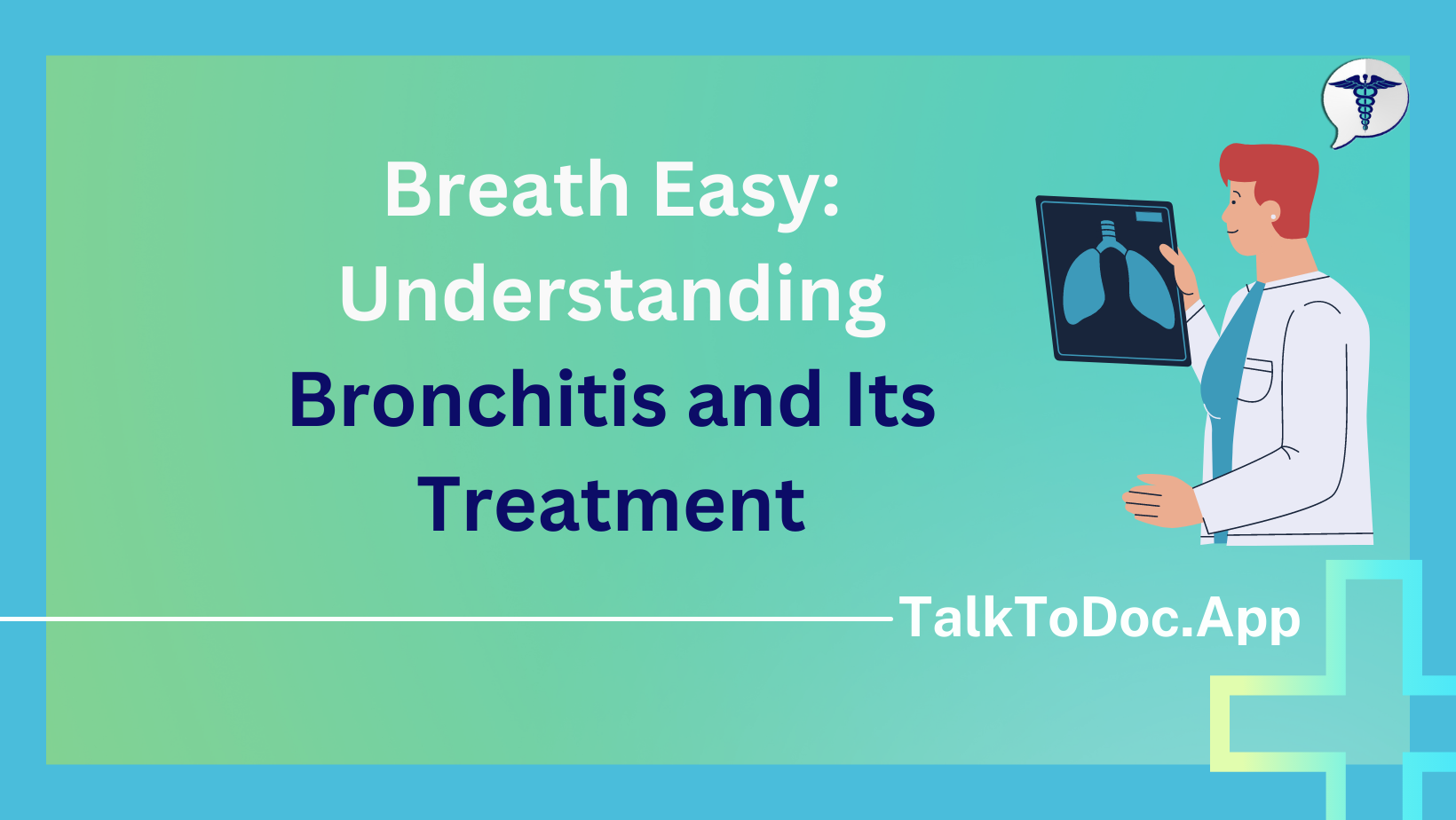Introduction
Bronchitis is a respiratory condition characterized by inflammation of the bronchial tubes, which carry air to and from the lungs. It can be acute or chronic, with acute bronchitis typically lasting for a few weeks and chronic bronchitis persisting for months or even years. In this article, we will explore the risk factors, causes, types, signs and symptoms, investigations, treatment options, prevention strategies, and lifestyle changes recommended by the World Health Organization (WHO) for managing bronchitis effectively.
Risk Factors
Certain factors increase the likelihood of developing bronchitis. These include:
- Smoking: Cigarette smoking is the primary risk factor for both acute and chronic bronchitis.
- Environmental factors: Exposure to secondhand smoke, air pollution, and occupational hazards such as dust, fumes, and chemicals can contribute to bronchitis.
- Weakened immune system: Individuals with weakened immune systems are more susceptible to respiratory infections, including bronchitis.
- Age and gender: Young children, the elderly, and males are at higher risk of developing bronchitis.
- Pre-existing respiratory conditions: People with asthma or other respiratory conditions are more prone to bronchitis.
Causes and Types
Bronchitis is most commonly caused by viral infections, but bacterial infections and environmental irritants can also play a role. The two primary types of bronchitis are:
- Acute bronchitis: Usually caused by viral infections, such as the common cold or influenza. It is often self-limiting and resolves within a few weeks.
- Chronic bronchitis: Typically associated with long-term exposure to irritants, particularly cigarette smoke. Chronic bronchitis is characterized by a persistent cough and can lead to significant lung damage over time.
Signs and Symptoms
- Persistent cough, with or without mucus production
- Chest discomfort or tightness
- Shortness of breath or wheezing
- Fatigue or weakness
- Sore throat and nasal congestion (common in acute bronchitis)
- Recurrent respiratory infections (common in chronic bronchitis)
Investigations
To diagnose bronchitis, healthcare professionals may perform the following investigations:
- Physical examination: Evaluating symptoms, listening to lung sounds, and checking for other respiratory signs.
- Chest X-ray: Used to rule out other conditions and assess lung health.
- Pulmonary function tests: Measures lung capacity and airflow, helpful in assessing chronic bronchitis.
- Sputum culture: Collecting and analyzing sputum samples to identify the presence of bacteria or other pathogens.
Treatment and Prevention
Treatment options for bronchitis focus on relieving symptoms and addressing underlying causes. These may include:
- Symptomatic relief: Over-the-counter cough suppressants, expectorants, and pain relievers can help manage symptoms.
- Antibiotics: Prescribed in cases of bacterial bronchitis or secondary infections.
- Bronchodilators: Medications that open up the airways and ease breathing in chronic bronchitis.
- Smoking cessation: The most crucial step in managing and preventing bronchitis is quitting smoking.
- Vaccinations: Annual influenza vaccines and the pneumonia vaccine are recommended to prevent viral and bacterial infections that can lead to bronchitis.
Lifestyle Changes
Adopting certain lifestyle changes can significantly reduce the risk of bronchitis. These include:
- Avoiding tobacco smoke: Quitting smoking and avoiding exposure to secondhand smoke.
- Minimizing exposure to pollutants: Reducing exposure to air pollutants, including dust, chemicals, and fumes.
- Practicing good hygiene: Regular handwashing and avoiding close contact with individuals who have respiratory infections.
- Maintaining a healthy lifestyle: Eating a balanced diet, staying physically active, and getting adequate rest to support a strong immune system.
Conclusion
Bronchitis is a respiratory condition that can significantly impact an individual’s quality of life. Understanding the risk factors, causes, types, signs and symptoms, investigations, treatment options, prevention strategies, and lifestyle changes associated with bronchitis is crucial for effective management and prevention. By following WHO guidelines and making necessary lifestyle modifications, individuals can reduce the incidence of bronchitis and improve respiratory health. If you suspect bronchitis or have persistent respiratory symptoms, it is essential to consult a healthcare professional for accurate diagnosis and appropriate treatment.
